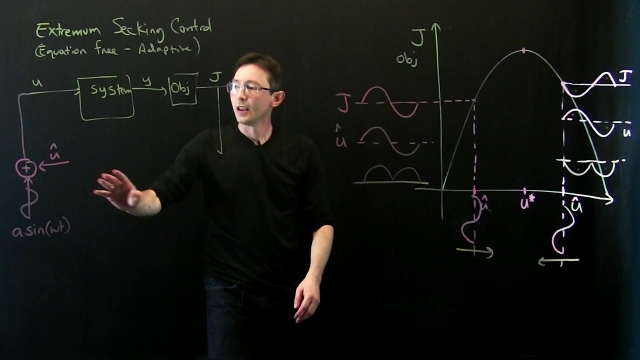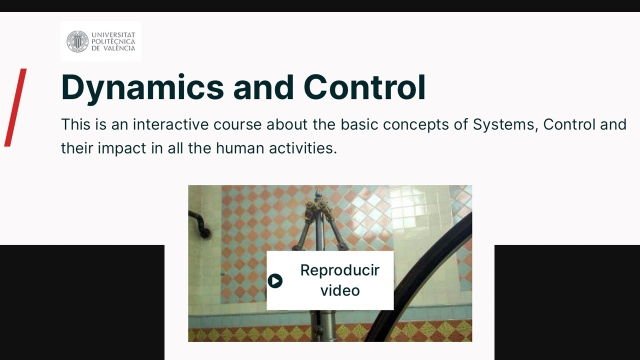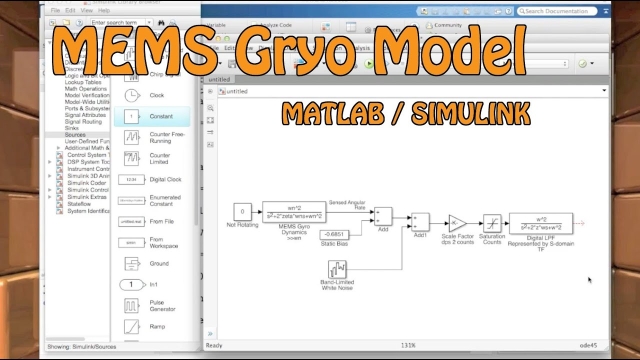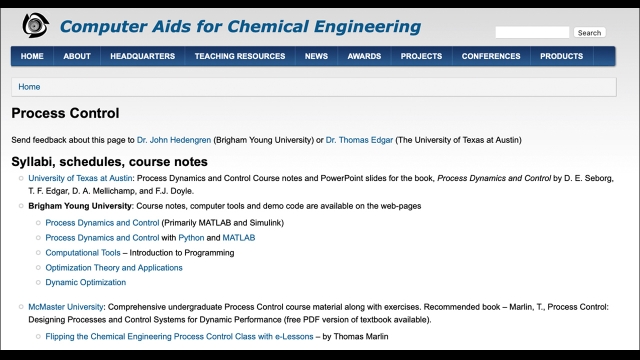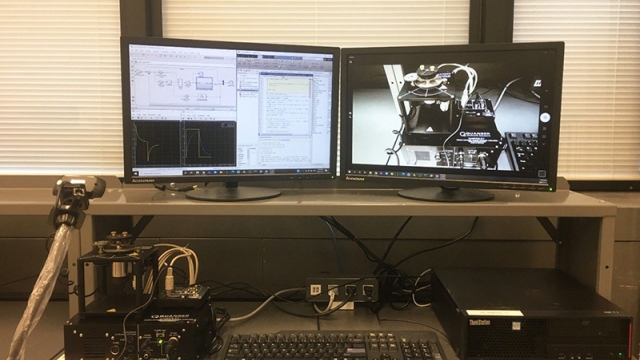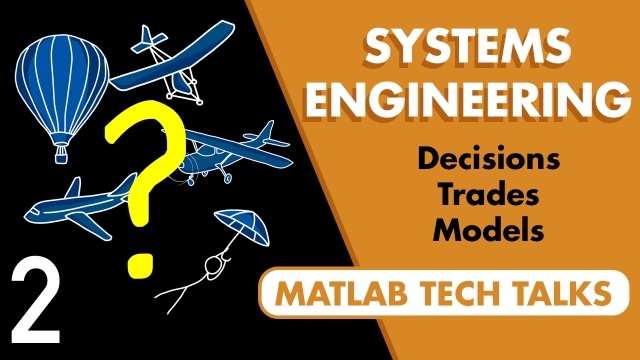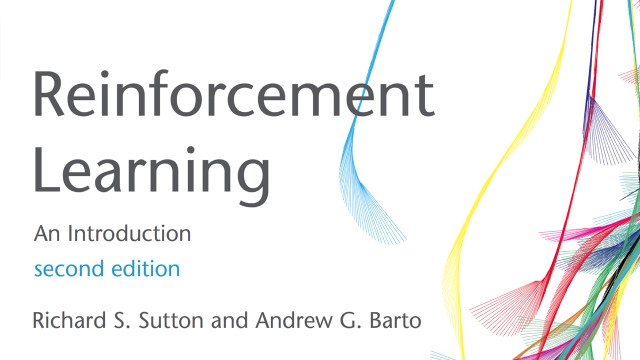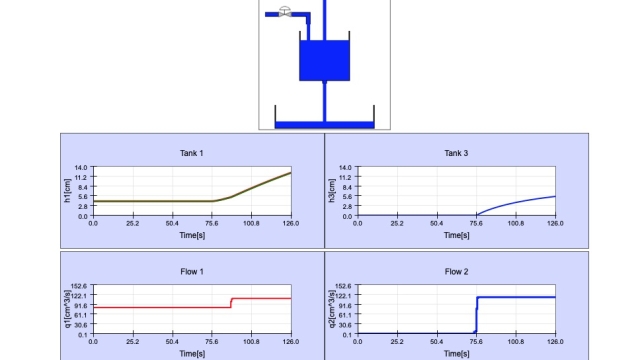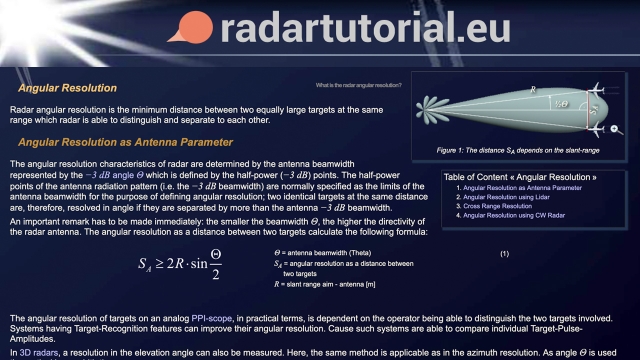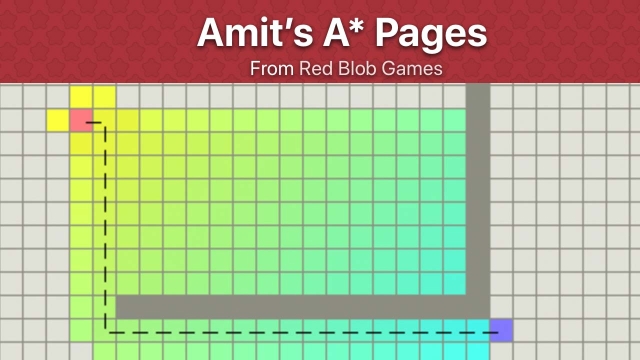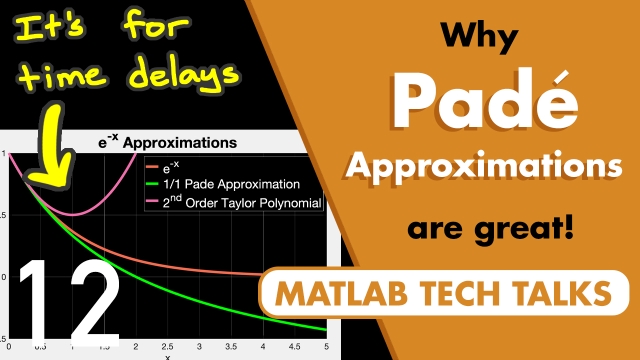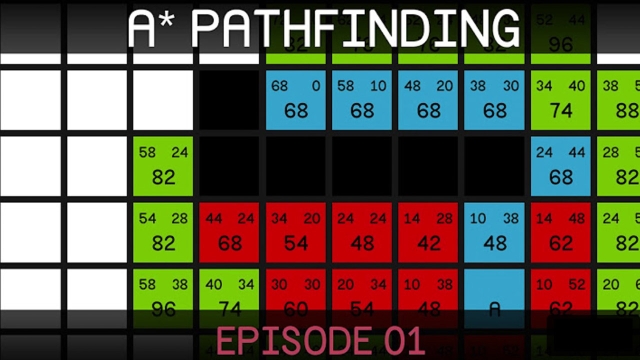
Extremum Seeking Control
This lecture provides an overview of extremum-seeking control (ESC), which is an adaptive equation free method of controlling nonlinear systems. A sinusoidal perturbation is added to the...
See MoreedX course: Dynamics and Control
This is an interactive course about the basic concepts of Systems, Control and their impact in all the human activities. First, the basic concepts of systems, dynamics, structure and control...
See MoreRobust Control, Part 4: Working with Parameter Uncertainty
The previous two videos showed a few different ways to quantify how robust a system is to model and plant uncertainty by looking at how much input and output variation it can handle before...
See MoreFeedback in the Squishy Stuff: Introducing Chemical and Biological Process ...
Feedback doesn’t just happen in robots and self-driving cars, but in the regulation of our very bodies and in the ways in which we transform raw ingredients into materials we can use, be...
See MoreSprint - Test Flight 8 and Data Review
This video is part of a series that details the design, build, and test of Sprint - a thrust vector controlled model rocket by Joe Barnard of BPS Space.
See MoreIntroduction to Anomaly Detection for Engineers
Anomaly detection is the process of identifying events or patterns that differ from expected behavior. This is important for applications like predictive maintenance but can be hard to...
See MoreA simple MEMS gyro model using MATLAB / Simulink
This video walks through how to model a simple MEMS gyroscope using MATLAB/Simulink. At the end I show you how to linearize this model to use in your linear control loop design and analysis.
See MoreWhy Do Radars Chirp? | Pulse Waveform Basics
This tech talk covers how different pulse waveforms affect radar and sonar performance. See the difference between a rectangular pulse and a linear frequency modulated pulse, as well as...
See MoreRadar Systems Engineering Lecture 4: The Radar Equation
This Free Radar Systems Engineering Course (video, audio and screen captured ppt slides) and separate pdf slides) has been developed as a first course in Radar Systems for first year...
See MoreConverting Constrained Optimization to Unconstrained Optimization Using the ...
In this video we show how to convert a constrained optimization problem into an approximately equivalent unconstrained optimization problem using the penalty...
See MoreComputer Aids for Chemical Engineering
A curated list of resources for Chemical Engineering students. The resources include syllabi, schedules, course notes, textbooks, screencasts, software, hardware, and other useful links.
See MoreA Hybrid Lab Experience: Blending Hands-on Explorations with the Flexibility...
This case study examines how the Earth and Space Science and Engineering (ESSE) department at York University in Toronto offered a meaningful remote laboratory experience to over 180...
See MoreSystems Engineering, Part 2: Towards a Model-Based Approach
The role of systems engineering is to help find and maintain a balance between the stakeholder needs, the management needs, and the engineering needs of a project. So we can think of it as...
See MoreReinforcement Learning: An Introduction
From the book introduction:
The idea that we learn by interacting with our environment is probably the first to occur to us when we think about the nature of learning. When an infant plays...
See MoreVirtual Lab for a Two-tanks system
This is a virtual lab for a two-tank system that can be used for modelling and control learing/teaching purposes. Open-loop tests and closed-loop simulatons based on PI control or PI plus...
See MoreSimulink Onramp
Learn the basics of how to create, edit, and simulate models in Simulink®. Use block diagrams to represent real-world systems and simulate components and algorithms.
See MoreRadar Angular Resolution
This radartutorial.eu page describes angular resolution. Radar angular resolution is the minimum distance between two equally large targets at the same range which radar is able to...
See MorePathfinding with A*
An interactive visual explanation of the A* pathfinding algorithm. This resource uses motivating examples from computer games.
See More
Interactive Course for Control Theory
Control Theory is a topic that finds a widespread application throughout engineering and natural sciences. It is very common in electrical, mechanical and process engineering. Especially...
See MoreModeling Perturbations and Element Failures in a Sensor Array
This MATLAB example shows how to model amplitude, phase, position and pattern perturbations as well as element failures in a sensor array.
See MoreNyquist Stability Criterion
The Wikipedia article on Nyquist Stability Criterion. This covers the Nyquist plot, the Cauchy argument principle, and the stability criterion itself. A mathematical derivation is also...
See MoreWhy Padé Approximations Are Great! | Control Systems in Practice
Watch an introduction to Padé approximations. Learn what Padé approximations are and how to calculate them, why they are important, and when to use them—specifically in the context of time...
See MoreA* Pathfinding (E01: algorithm explanation)
Welcome to the first part in a series teaching pathfinding for video games. In this episode we take a look at the A* algorithm and how it works.
See MoreNeural Network Overview
This lecture gives an overview of neural networks, which play an important role in machine learning today.
See MorePeter Ponders PID - Introduction
The purpose of this video is to inform the viewer about what to expect. My videos go much deeper than the typical videos. They are geared for graduate st...
See More
